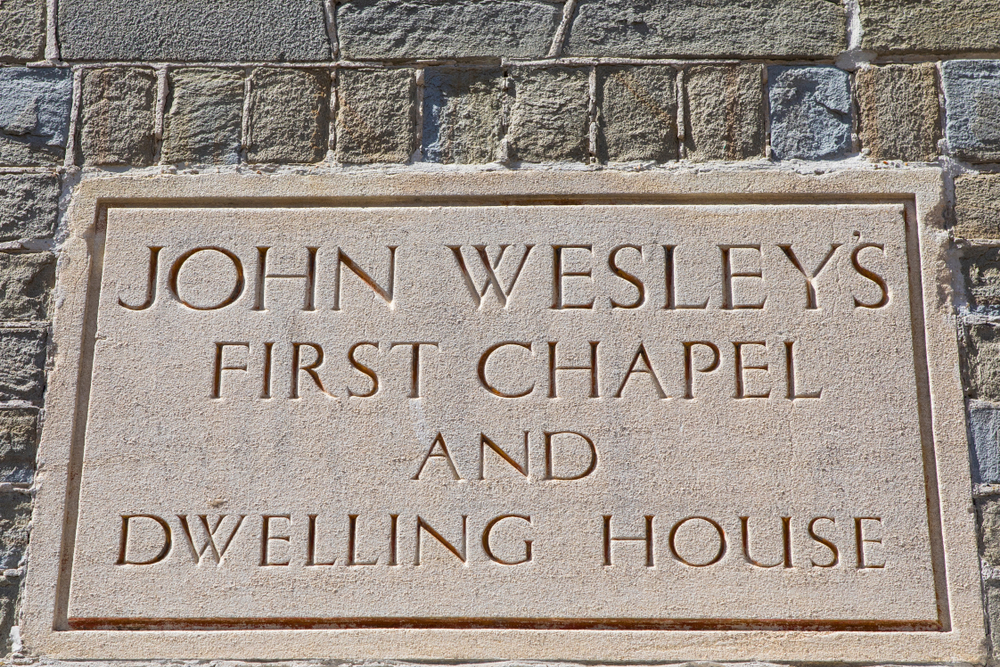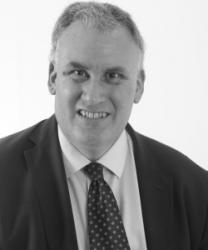Our journey through the 18th-century evangelical revival continues in the company of John Wesley (1703–1791). Wesley was an extraordinary individual. First, he was a systematic organizer, one key reason for his legacy in Methodism—as seen most prominently in his forming of bands (3–4 people) and classes (10–12 people) for Christian education. He preached some 40,000 sermons, carefully recorded in his sermon register, and rode some 250,000 miles on horseback proclaiming the gospel in the open air. Wesley, though, was a complex character, so radical and yet so conservative. The same John Wesley who declared his freedom to ordain workers for America also said that he lived and died a member of the Church of England—and opposed the Patriot cause in the American War for Independence.
John Wesley was born in Epworth, Lincolnshire, on June 17, 1703, where his father was the rector. His parents, Samuel and Susannah, were both godly and pious. They were concerned about the spiritual drift of the nation and committed to good works and the care of the people in Samuel’s small parish of around 1,100 souls. A fire in the Epworth rectory in 1709 completely destroyed the building. It was a miracle that no one died. In fact, the young John Wesley was snatched from the blaze in what was certainly viewed as an act of divine providence. Wesley, in 1753, thinking he was dying, wrote his epitaph: “A brand plucked out of the burning,” which indeed was engraved on his tombstone nearly 40 years later. The whole picture became one of the building blocks of Methodism.
In 1720, John entered Oxford University. As was common in pre-revival England, ordination was often a rite of passage to a career in the Church, more than a consequence of a lively faith. Wesley, though, was motivated by Christian principles even if he had not yet experienced evangelical conversion. He was ordained a deacon on Sunday, September 19, 1725.
There was an earnestness about Wesley evident even then. Immediately after his ordination, he determined to review his life twice a day. On several occasions he resolved to fast. His reading was spiritual and included Jeremy Taylor’s Rules for Holy Living and Dying and Thomas à Kempis’ The Imitation of Christ. There was a quest within Wesley, a struggle, and a restlessness. This spiritual desire, even passion, led to the founding of the Holy Club. Wesley, his brother Charles (to whom we owe some of the church’s greatest hymns), and a few others agreed to take Holy Communion every week (this was not the norm at the time), to fast regularly, to follow the festivals of the church, and to visit the prisoners in the jail. They faced much ridicule in the public expressions of their faith, and were jeered, mocked, and spat at as they processed to Holy Communion each week. Wesley noted the various disparaging titles that were used of what he simply referred to as “our Company”: Sacramentarians, The Godly Club, The Enthusiasts, and of course, “Methodists.” Wesley and the Holy Club were certainly methodical, disciplined, and systematic in their piety, and so that last name stuck and later was even adopted by Wesley himself.
Wesley remained spiritually uneasy, however. He agreed to travel to Georgia, to establish orphanages and bring Christianity to the colonies. On his voyage in 1736, he met a group of German Moravian Christians, pietists, led by Peter Böhler. Wesley was captivated by the depth of their devotion and insistence that a personal relationship with God was possible. When Wesley returned from Georgia in February of 1738, he sought out a religious society of Moravians that met in London. The scene was now set for Wesley’s own conversion experience, which he described in his journal entry for May 21, 1738:
In the evening I went very unwillingly to a society in Aldersgate Street, where one was reading Luther’s Preface to the Epistle to the Romans. About a quarter before nine, while he was describing the change which God works in the heart through faith in Christ, I felt my heart strangely warmed. I felt I did trust in Christ, Christ alone for salvation, and an assurance was given me that he had taken away my sins, even mine, and saved me from the law of sin and death.
The elements are all there: reformation, personal piety, the doctrinal and the experiential. Wesley’s conversion has functioned as the model for the “born again experience” ever since, but was neither the first nor by far the only such conversion in the greater evangelical revival.
Evangelist George Whitefield, already converted and preaching in England, heard of Wesley’s conversion and wrote asking him, in 1739, to come to Bristol, where he was ministering to the miners in the Kingswood district. Wesley decided to travel after casting lots, a practice Whitefield frowned upon to say the least. On his arrival, Wesley noted “this strange way of preaching in the fields” (Journal, March 31, 1739). Wesley was a Church of England man, committed to decency and good order. But he was being prepared for a different kind of ministry. On April 1 he wrote in his diary that the Sermon on the Mount was an example of field preaching. The outcome was, by now, probably inevitable. On Monday, May 2, 1739, he wrote that the previous day, at around four in the afternoon, he had “proclaimed in the highways the glad tidings of salvation” to about 3,000 people. When some expressed concern, Wesley replied with one of his most famous quotations, in a letter dated June 11, 1739: “I have now no parish of my own, nor probably ever shall. … I look upon all the world as my parish. … This is the work I know God has called me to do, and I am sure that His blessing attends it.”
Wesley and Whitefield, whose own renown as a great preacher was growing, especially with the explosions of conversions and renewal known as the First Great Awakening, sought to remain on friendly and supportive terms, yet there was always a tension between them. Wesley was an Arminian and advocated what he called “free grace,” whereas Whitefield was a Calvinist and became increasingly committed to the idea of the predestination of the elect. Wesley also provoked consternation with his idea of Christian perfectionism—the possibility of a life free from sin in this world. More on that next time.
It was only a matter of time before Wesley’s followers would seek separation from the Church of England, which had a tradition of suppressing overly exuberant expressions of faith. So Wesley began considering the future of the “Methodist” revival movement. In time, he appointed lay preachers, purchased a headquarters (the Foundery), and established what would become the Methodist Conference.
And with Methodism spreading in America, Wesley sought unsuccessfully to persuade the bishop of London to formally ordain workers to meet the growing demand. Francis Asbury, already in America as one of Wesley’s lay preachers, reported a lack of ministers and opportunities for the Lord’s Supper. Wesley concluded that he must act, and did so, in Bristol in 1784. He saw the provision of ministry to souls as a gospel imperative that superseded the demands even of church order. And so he personally ordained three men (Thomas Coke, Richard Whatcoat, and Thomas Vasey) for the work in America. In a letter dated September 10, 1784, he wrote: “Here, therefore, my scruples are at an end, and I conceive myself at full liberty, as I violate no order and invade no man’s right by appointing and sending labourers into the harvest.”
Wesley continued as if nothing out of the ordinary had happened. But the die was cast. He was rewriting church order. Eventually, separation of the Methodists from the Church of England was the only way forward. Coke in America was empowered to conduct ordinations himself. This was a step that went considerably further than the itinerancy and field preaching known across England and America. Even more controversially, in 1787, he authorized Sarah Mallet to preach so long as “she proclaimed the doctrines and adhered to the disciplines that all Methodist preachers were expected to accept.” This was to be the first step in what would become the Wesleyan tradition of ordaining women clergy.
In the same year as the ordinations for America, John Wesley, appointed 100 men to oversee the Methodist societies after his death. The great man died on March 2, 1791, buried beside his Methodist chapel in London. The formal break with the Church of England came four years later.
Within 30 years of Wesley’s death, the Methodist Church in America would become the largest Protestant denomination in the country.
Dynamic, controversial, but passionate for the gospel: Give thanks for John Wesley.
Part 1 of this series can be found here.

